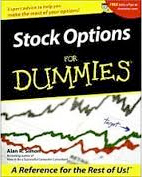Options Explained
Having options explained to you doesn't have to be difficult or confusing. If you read the first few pages of this tutorial you should get a good understanding of how they work. First, some put and call option basics explained:
One option contract controls 100 shares of stock.
However, options are quoted on a per-share basis so when you see an option price quoted at $1.50 that means it's $150 per option contract (because each contract controls 100 shares).
If you owned 100 shares of stock, you could sell 1 call option against it and receive $150.
If you owned 500 shares of stock, you could sell 5 call options against it (not 500 call options) and receive 5 x $150, or $750.
Likewise, if you own less than 100 shares of stock you can't create a covered call position from it.

Options (calls and puts) have 3 attributes to identify them:
- the underlying stock they represent
- the expiration date
- the strike (or exercise) price
Monthly options expire on the Saturday after the 3rd Friday of their expiration month. No reason. They just do. The last day they trade is the day before they expire (i.e. they stop trading on the 3rd Friday of the month).
Strike prices are generally available in $5 increments, or in $2.50 increments for lower priced stocks, or in $10 increments for high priced stocks. Some heavily traded stocks have strikes in $1 increments. (You don't need to remember this; we'll show you all of the available choices in our tables; that's just the kind of top-notch firm we are.)
There are 847,208 call options available today with different combinations of stock, month, and strike price, but for some stocks, some months, and some strike prices, there are no options available. The Chicago Board Options Exchange decides which options are available. You will see "-" in our tables if an option is not available.
Another way to have call options explained when you're done with this tutorial is to read through our covered call blog. It explains stock options with several examples.
